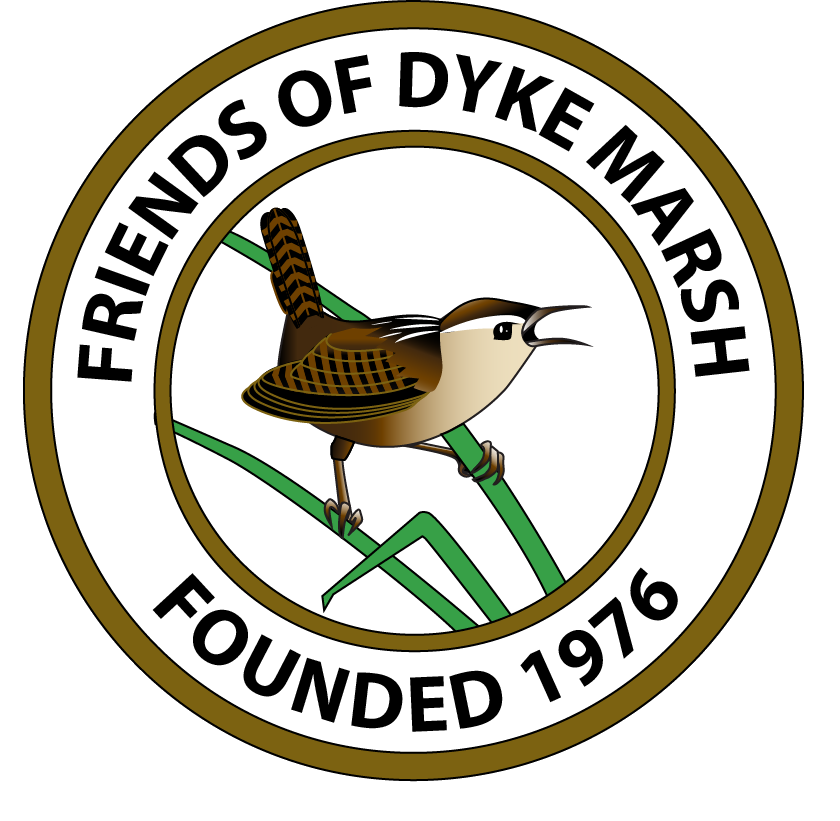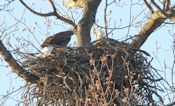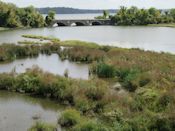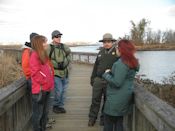As of early February 2018, three bald eagle pairs have active nests in the Dyke Marsh Wildlife Preserve. Observers have seen eagles taking sticks to nests, pairs perched, females incubating eggs and a male taking prey to a female on the nest.
Bald eagles lay two to three eggs in late winter and females incubate the eggs for five to six weeks. Between May and July, chicks fledge at 10 to 12 weeks of age. Nest construction, breeding, nesting and eaglet hatching do not always succeed.







